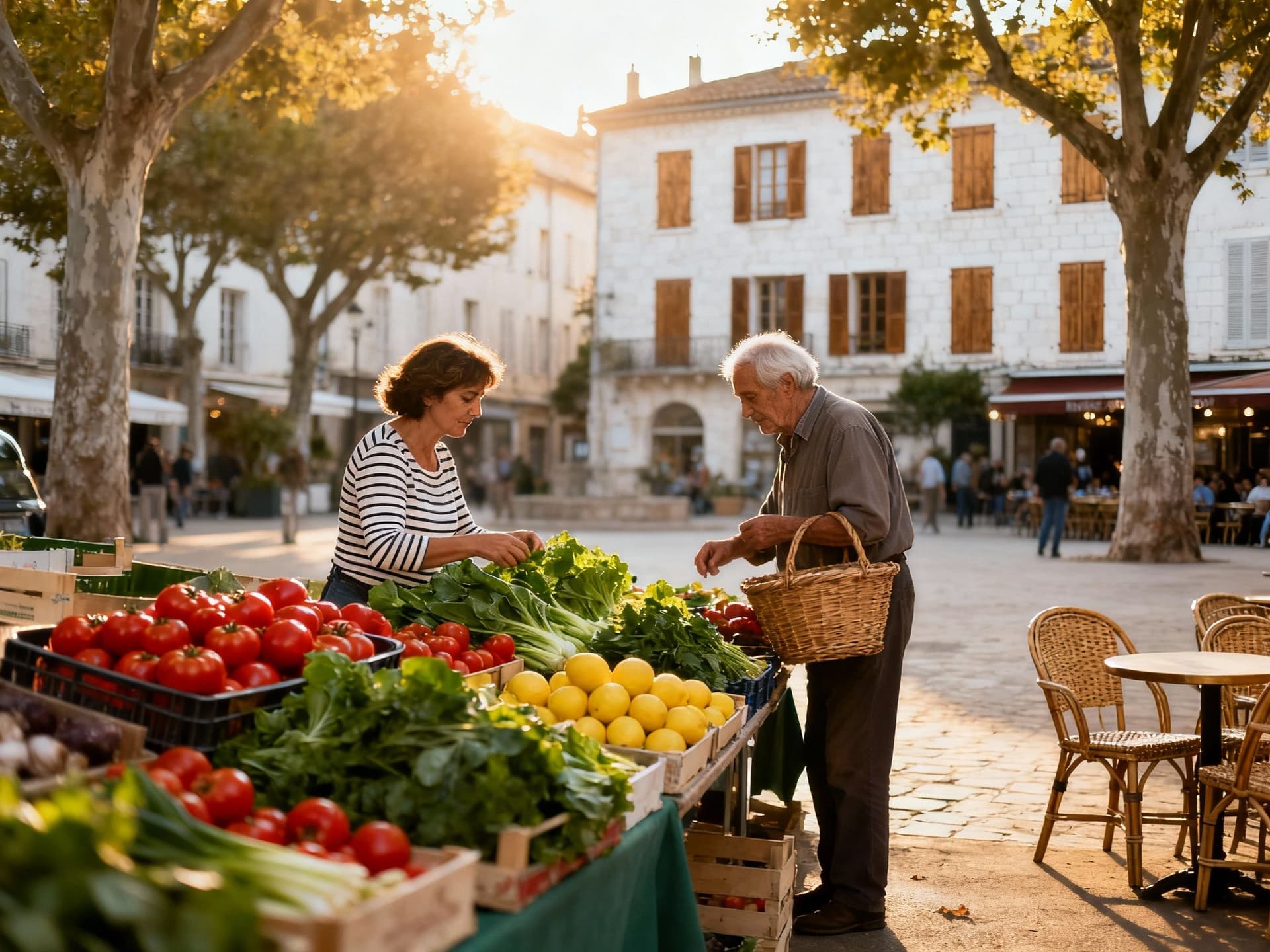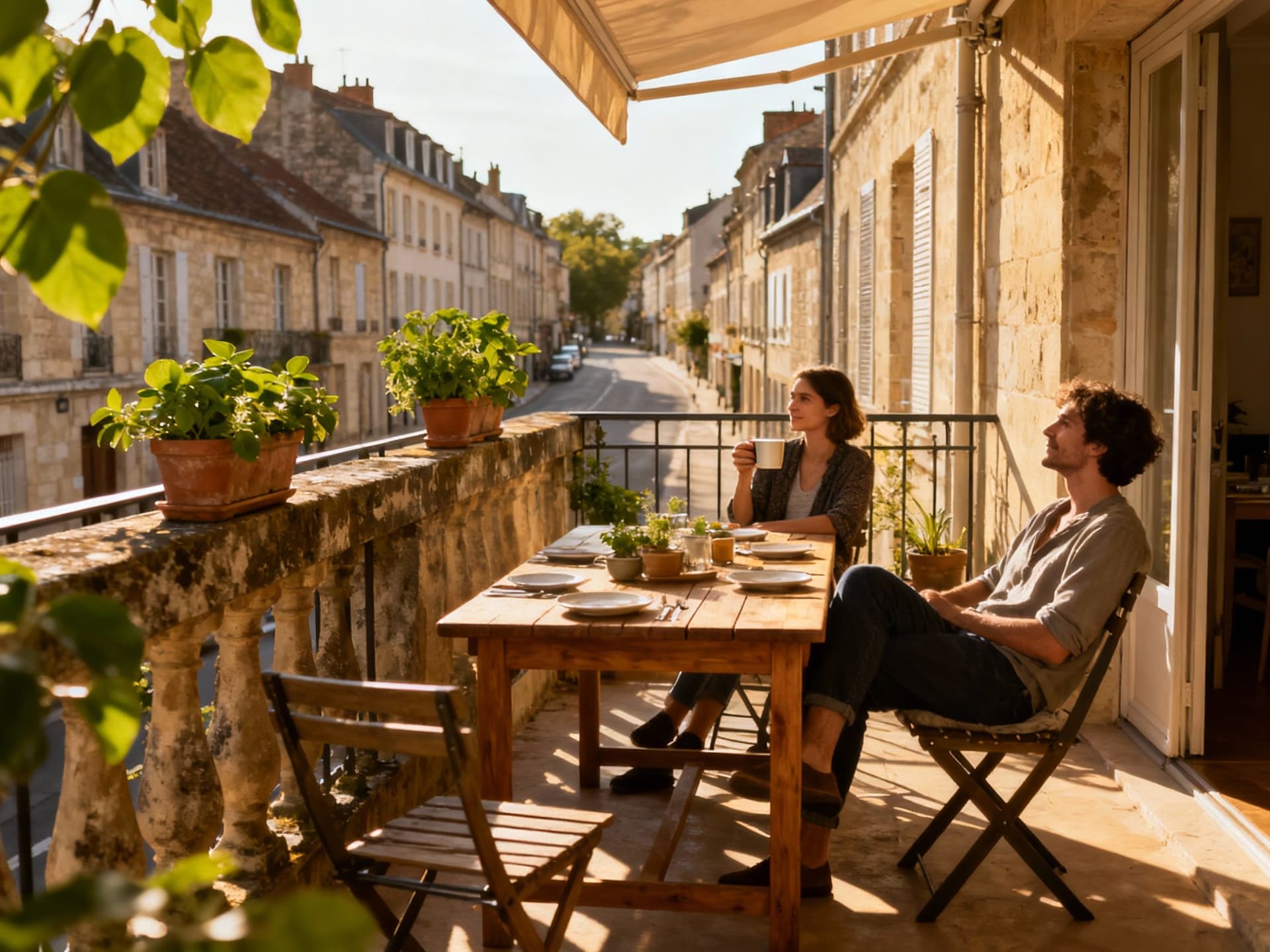Riviera Shine vs Inland Yield: France’s Quiet Winners
France’s romance hides yield patterns: Paris and the Riviera sell lifestyle, while regional cities like Nantes and Marseille often deliver stronger, steadier rental returns.
Imagine starting the day with a baguette from Marché d'Aligre in Paris, an afternoon espresso on Nice's Promenade des Anglais, and an evening walk through Nantes' narrow streets where restaurants stay full until late. That sensory rhythm — markets, small cafés, tram bells, and boulangeries — is why people fall for France. But desirability and rental returns don't always move together: coastal glamour and headline Paris prices can hide surprisingly higher yields inland. This piece shows where lifestyle and income meet, so you can match the life you crave to the yields that make it financially sensible.
Living the French life — what really matters

France is a mosaic — each region has a tempo shaped by food, light and public life. In Paris you live on layered history and tight apartments; on the Riviera life orbits outdoor cafés and seasonal tourism; in cities like Lyon or Nantes the weekday bustle supports steady renter demand. For an investor the question is whether you want nightly demand and seasonality or steady, year‑round rents from students, professionals and local families. Read lifestyle first: it determines tenant types, peak months and the hands-off or hands-on management you'll need.
Paris: density, premium rents, selective yields
Picture morning markets on Rue Cler, rush-hour metros and compact apartments with high per‑m2 prices. Paris commands premium rents, but high acquisition costs compress gross yields: citywide averages often sit around the mid‑4% range for apartments. Local notaires report price recovery pockets and strong demand in some arrondissements, so capital growth can complement modest yields if you accept lower initial cash returns. For yield‑focused buyers, Paris is often a portfolio diversifier rather than a core income play.
Provence & Côte d’Azur: seasonal glamour, short‑let potential
Sunny beaches and Michelin restaurants drive strong short‑let demand along the Riviera, but seasonality matters: occupancy concentrates in spring–autumn. Gross yields can look attractive in peak months, yet when annualised the headroom over acquisition costs narrows—especially after local short‑let regulations and platform fees. If you plan short‑lets, factor in vacancy risk, higher turnover costs, and the need for compliant property management that understands municipal rules.
- Lifestyle highlights that shape tenant demand
• Marché d'Aligre (Paris) — daily foot traffic and convenience attracts long‑let tenants. • Vieux‑Port (Marseille) — regeneration projects support rising rents and BTR interest. • Presqu’île (Lyon) — professionals, students and short corporate lets create steady occupancy. • Île de Ré (Charente‑Maritime) — strong holiday premiums but narrow annual yield window. • Nantes bistronomy scene — growing tech hubs supplying year‑round renter pools.
Making the move: practical considerations that protect yields

Lifestyle sells the dream; metrics protect returns. National data show rents rising modestly in late 2024–early 2025, with INSEE recording a 1.4% increase between Oct 2024 and Jan 2025. That steady rental inflation matters: small annual rent upticks compound over time and can offset acquisition drag. But local market microdata — price per m², tenant mix, and seasonality — determine your real net yield, not the national headline.
Property types: what tenants actually want
In city centres compact, renovated studios and 1‑beds target young professionals and command high per‑m2 rents. In university towns, 2–3 beds that can be split into student rooms outperform on occupancy. In Provence or the coast, properties with outdoor space (terrace, small garden) increase seasonal rental rates. For investors, choose the property form that matches likely tenants: mismatch is the single largest yield destroyer.
- Stepwise process to protect yield (4 steps)
1. Map tenant demand by town (students, professionals, tourists) and check local rent indices. 2. Price per m² check: compare current offer price to recent sold prices in same street and building. 3. Model conservative gross yield (use 5–10% vacancy, management fees, and renovation costs). 4. Contract with an on‑the‑ground agent who can source long‑let tenants and manage compliance.
Insider knowledge — what expats wish they'd known
Expat buyers often underestimate how local customs and timing shape costs. For example, municipal short‑let rules differ widely and can turn a Riviera holiday flat into a compliance headache. Many also misjudge renovation timelines for older stone buildings — permit timelines and contractor availability can add months and cost. The smartest buyers overlay lifestyle desire with these realities before signing and budget a minimum 7–10% contingency for works in older properties.
Cultural and seasonal realities that change tenancy
French tenants prize well‑maintained heating, double glazing and certifiably safe electrical systems — items that can be expensive to retrofit in historic homes. Seasonality affects services: janitor and trades availability slows in August and around Christmas. Speaking basic French materially speeds negotiations and post‑sale management; bilingual agents are useful but expect local documents in French. These small frictions add to holding costs unless anticipated.
- Red flags to watch for (investor checklist)
• Missing diagnostics (DPE energy, electrical) or inconsistent certificates. • Unclear copropriété (condo) charges or pending travaux (renovation works). • Over‑optimistic occupancy assumptions for short‑lets. • Market relying on a single seasonal event or employer (fragile demand).
A practical example: Nantes and Marseille currently offer stronger gross yields than many coastal resorts, supported by diversified local economies and year‑round renter pools. National yield trackers (see Global Property Guide) reported an average gross yield of about 4.6% in mid‑2025, with pockets above 5% in selected provincial cities. Use these benchmarks as a sanity check when an agent quotes a projected yield — if it deviates markedly from published city averages, ask why and request the data behind the projection.
If you want to combine a French lifestyle with a yield‑aware strategy: favour regional cities undergoing regeneration, buy the right property type for local tenants, and partner with agencies that publish local rent comparables. Start by narrowing to three towns: one for lifestyle, one for yield, one as a compromise. Then model returns conservatively with a local manager's input and a 10% contingency for unforeseen works.
France offers a rare combo: a life rich in food, culture and daily ritual alongside structurally solid property markets. The Riviera, Paris and châteaux landscapes will always headline the romance; the quieter returns often live inland or in mid‑sized cities. Pair your desired daily life with disciplined yield analysis — that balance is where successful international buyers transform a holiday fantasy into a durable income asset.
Danish relocation specialist who moved to Cyprus in 2018, helping Nordic clients diversify with rental yields and residency considerations.


